What is Checked During a Roof Inspection? (13-point roof inspection)
Your roof's health might not seem critical unless it's visibly damaged or leaking. However, a collection of seemingly minor roofing concerns can...
From an outside perspective, it’s easy to assume that shingles are the only thing making up a roof. However, roofs are more complex than you’d think. They have several different elements that all work together to form a complete roofing system that protects your home. One of those elements is the roof flashing.
Flashing is vital for a high-quality, long-lasting roof. Without it, your home could be left vulnerable to roof leaks, water damage, mold, and even premature roof failure. Learning the importance of flashing will help you avoid these situations and leave you more knowledgeable about the state of your roof.
On average, the team here at On Tops Roofing works on over 900 roofs per year. Whether it be a roof replacement, repair, skylight installation, insurance claims, or roof maintenance, we want to make sure our homeowners understand every part of their roofing experience.
So, in this blog, we’ll be going over everything you need to know about roof flashing, including:
Let’s get into it!
Roof flashing is a thin metal material that lays under the shingles to prevent water from entering any openings or cracks on your roof. It is designed to redirect water away from vulnerable areas on your roof.
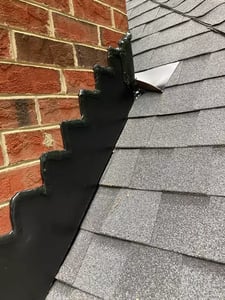 Flashing must be installed in these specific areas:
Flashing must be installed in these specific areas:
- Around chimneys
- Sidewalls and front walls (the place where the roof surface meets a wall)
- Valleys (low points where two roof slopes join)
- Roof protrusions (bathroom vents, kitchen vents, and skylights)
- Roof edges (eaves and rakes)
These areas are extremely vulnerable to water, which means you could experience a roof leak if they aren’t protected with flashing.
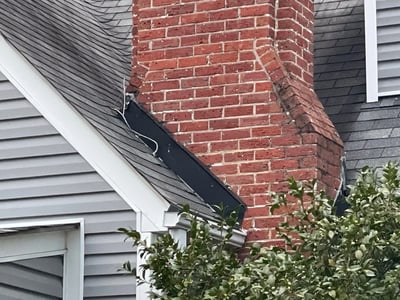
Roof flashing is typically made with either aluminum, copper, or steel. Below are the benefits of each type:
Aluminum - Aluminum flashing is lightweight and easy to install. This is the most common type of metal used for roof flashing.
Copper - Copper flashing is malleable and easily bonds with other roofing materials. It is extremely durable and has a long lifespan. If you want to upgrade the look of your roof, copper is a great choice.
Steel - Steel flashing is galvanized to prevent corrosion and is super malleable, which makes it easy to work with. It gives your roof a clean look and fits most homeowners’ budgets.
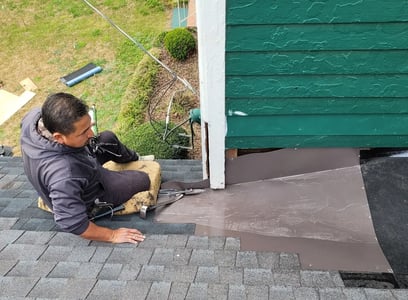
Though all flashing is designed to prevent water from damaging your roof, there are different ways that flashing is cut or molded to protect certain parts of the roof. Here are the six most common types of roof flashing:
Step Flashing - This flashing includes “L” shaped pieces of material that are used at walls and go up the rake of the roof in between each shingle. You can see where step flashing is installed, so some homeowners choose more expensive materials like copper to better suit their home’s aesthetic.
Counter Flashing - Counter flashing is placed on top of step flashing when used in conjunction with brick or concrete walls/structures. It is designed to make sure water doesn’t go past the base flashing and instead flows down the roof or into the gutter.
Apron Flashing - This type of flashing is typically used on walls or penetrations and is shaped like an L to fit the base of these areas.
Valley Flashing - This flashing is installed where two sides of a roof or gable come together to form a valley. This helps direct running water off the roof and into the gutters.
Kickout Flashing - This type of flashing is needed when a gutter ends against a sidewall. It helps prevent water from running down the sidewall and instead diverts it into the gutters.
Drip Edge - This flashing attaches over the top of fascia boards and the edge of the roof beneath the shingles. They have a bent design that allows them to keep water from flowing backward towards your roofing components. They are designed to direct water into gutters or off the fascia boards.
A roof leak is one of the most common challenges you could face as a homeowner. A leak doesn’t just damage your roof; it can also wreak havoc on your attic walls, ceiling, and the interior of your home. Because flashing is specifically designed to prevent roof leaks, it also helps protect the overall structure of your home in these ways: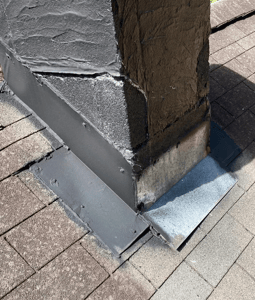
Flashing Increases Your Roof’s Lifespan - When your roof leaks, moisture gets trapped in the roof’s structure. This includes your roof’s wooden sheathing, underlayment, trusses, and rafters. When these elements take on water damage, they can rot and lead to premature roof failure.
Flashing Prevents the Growth of Mold - When water infiltrates an attic, it creates a damp atmosphere that encourages the growth of mold. This can impact the air quality in the rest of your home, potentially creating an unhealthy environment for you and your family.
Flashing Protects Your Home’s Insulation - A roof leak could also damage the insulation in your attic, which puts your roof’s health at risk. For example, homeowners who live in colder climates are prone to ice dam formation if their attic insulation is damaged. This can cause shingle deterioration, decking decay, and more.
Now that you know what roof flashing is, what it’s made of, and the seven different types of flashing, hopefully you’re feeling more confident knowing how your roof and all of its components are designed to protect your home.
Remember, proper roof flashing is vital to getting the most life out of your roof. However, it isn’t the only material that works to extend your roof’s longevity. You can check out our article on the ten materials included in your roof replacement to learn more about the other components that make up your roof.
On Tops Roofing has been helping Raleigh, NC homeowners learn more about their roofs, and the roofing process, since 1991! Whatever your roofing project requires, We’re on it!
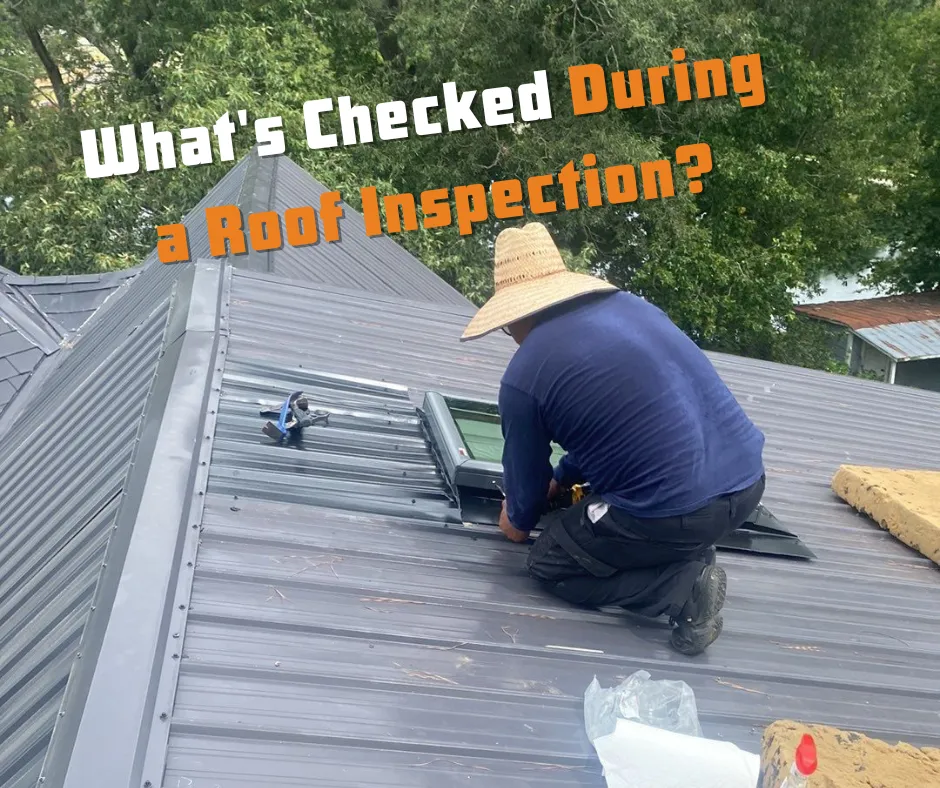
Your roof's health might not seem critical unless it's visibly damaged or leaking. However, a collection of seemingly minor roofing concerns can...

Starting a roof replacement project is a pretty big undertaking. It requires stripping your home of something designed to protect it, and trusting...
_WebP.webp)
When it comes time for a roof replacement, it can be overwhelming to hear unfamiliar roofing terms casually tossed around like you’re supposed to...